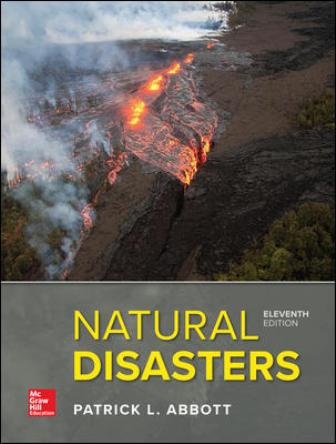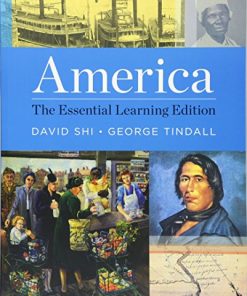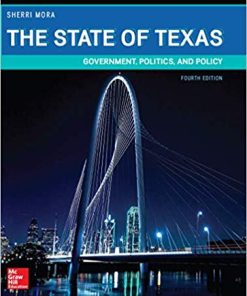The Test Bank for Natural Disasters, 11th Edition by Patrick Leon Abbott provides multiple-choice questions focused on understanding the internal energy processes and plate tectonics that shape natural disasters. This test bank covers Chapter 2: Internal Energy and Plate Tectonics, examining Earth’s structure and the energy sources that drive geological phenomena.
Sample Questions Include:
- Question 1: Earth is approximately ________ years old.
A) 30,000 thousand
B) 50 million
C) 3,500 million
D) 13.5 billion
E) 4.5 billion
Answer: E
Topic: Internal Sources of Energy - Question 2: Which of the following did NOT contribute to Earth’s early heat?
A) Impact energy
B) Gravitational energy
C) Dark energy
D) Radioactive decay
Answer: C
Topic: Internal Sources of Energy - Question 3: The process that led to Earth’s differentiation into a mantle and core involved ________.
A) Gravitational attraction of iron-rich particles forming the core, followed by the formation of the mantle from silicate-rich particles.
B) Nuclear reactions in Earth’s core converting hydrogen and helium into iron
C) Heat buildup causing iron to melt and sink toward Earth’s center
D) Magnetic attraction between iron and nickel cations
Answer: C
Topic: Earth History - Question 4: Earth’s inner core has a diameter of 2,450 km and is a ________ mass with temperatures up to 4,300°C (7,770°F).
A) Gaseous
B) Liquid
C) Solid
D) Plasma-like
Answer: C
Topic: Internal Sources of Energy - Question 5: As radioactive elements decay, they ________ heat energy.
A) Absorb
B) Release
C) Neither absorb nor release
D) May absorb or release depending on the isotope
Answer: B
Topic: Internal Sources of Energy - Question 6: The continents were once part of a supercontinent known as ________.
A) Laurasia
B) Gondwanaland
C) Tethys
D) Panthalassa
E) Pangaea
Answer: E
Topic: Plate Tectonics - Question 7: Which of the following is not a basic principle of plate tectonics?
A) The asthenosphere melts and moves upward, creating new ocean floor lithosphere.
B) Newly formed lithosphere moves laterally away from oceanic crust formation zones.
C) When two slabs of oceanic lithosphere collide, the denser, older one is subducted.
D) Subducted slabs begin melting and move into the Earth’s core.
E) Subducted slabs are reabsorbed into the mantle.
Answer: D
Topic: Plate Tectonics - Question 8: The average time for an atom in an oceanic plate to complete the plate-tectonic cycle is ________ years.
A) About 100,000
B) About 1 million
C) About 10 million
D) More than 250 million
E) Less than 500
Answer: D
Topic: Plate Tectonics
Key Features:
- In-depth focus on plate tectonics and Earth’s internal energy sources.
- The test bank includes multiple-choice questions to assess comprehension of geological processes.
- Instant download, no waiting time.
- Designed for students in earth sciences, geology, and natural hazard management.
This test bank is a valuable study tool to help you grasp the relationship between Earth’s internal energy and the natural processes that shape our planet, such as plate tectonics and geological hazards. It is an ideal resource for preparing for exams or deepening your understanding of the Earth’s structure and dynamic processes.













Reviews
There are no reviews yet.